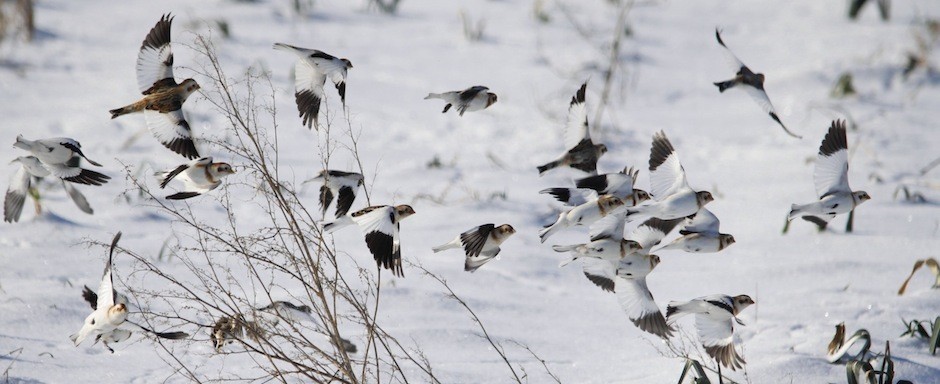Due to the strong, cold N wind, netting at Ruthven was greatly restricted. Still, using walk-in traps and a few nets, Nancy was able to handle 63 birds – but only 18 of them were “new”. And the majority of the 45 retraps were made up of only 3 species: Song Sparrows (5), American Tree Sparrows (13), and American Goldfinches (22). These (and the banded birds) were all species that use the feeders. Away from the feeders things were very slow.
Banded 18:
1 Song Sparrow
1 Dark-eyed Junco
16 American Goldfinches
ET’s: 29 spp.
Fern Hill School – Oakville:
The Oakville campus doesn’t have nearly the “bird habitat” that the Burlington campus does. (That is a major theme of the long term plan: significantly increase the bird friendly ecology.) But we started with the idea that “feed them and they will come” and the school has put up a number of feeders and kept them stoked. When they first went up early in the year the only birds I saw were American Tree Sparrows in some scrub in the NW corner. But a feeder complex plunked in the middle of that area has changed all that. Today, the first day that we’ve used nets (and we only used 2 small ones), Katherine and I banded 29 birds of 10 species:
5 Downy Woodpeckers
1 Blue Jay
5 Black-capped Chickadees
1 American Robin
2 Northern Cardinals
1 Song Sparrow
5 Dark-eyed Juncos
4 Red-winged Blackbirds
1 Brown-headed Cowbird
3 House Finches
All feeder birds I know….but when the migrants come they tend to hang out where there are other feeding birds. It will be a lengthy project but we’re off to a great start.
ET’s: 24 spp.
Rick
